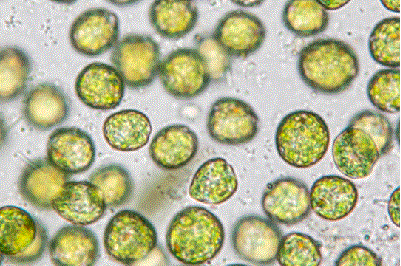Research | Infectious Disease | Global

Rather than introducing small chunks of DNA as other viruses do, some giant viruses can contribute more than 1 million base pairs to a host’s genome, broadening the ways in which viruses may shape eukaryote evolution. In the ultimate game of genetic hide and seek, scientists at Virginia Tech have identified several instances in which they found giant virus genomes embedded—some in their entirety—in the genomes of their hosts. The results, published today (November 18) in Nature, suggest that such integration by giant viruses may be more common than previously believed and that these viruses are likely an underappreciated source of genetic diversity in eukaryotes.
“We always assumed that [giant viruses] that can integrate into host genomes were not common,” Karen Weynberg, a virologist at the University of Queensland in Australia who was not involved in the work, tells The Scientist. “Now they’ve shown that these viruses are able to integrate on a much wider scope than we ever really perceived. It’s going to be groundbreaking, and I think people will be looking more into where these viruses are popping up.”
Giant viruses, so named because they tend to be about 10 times larger than the average virus, have challenged traditional ideas in virology since their discovery in 2003. In addition to their unusually large size, their genomes sometimes include genetic contributions from bacteria and eukaryotes, including metabolic genes. Because of this, “they don’t necessarily look viral” at the genomic level, says Frank Aylward, a virologist at Virginia Tech and a coauthor of the study.
Towards the beginning of his postdoc in Aylward’s lab, Mohammad “Monir” Moniruzzaman went searching for a handful of giant virus marker genes in all genomes accessible through the National Center for Biotechnology Information’s many databases—an exploratory exercise to see what came back. While most of the genes appeared in genomes labeled as viruses, Moniruzzaman says he was surprised by how many of these giant virus genes appeared in genomes labeled as belonging to microscopic marine phytoplankton.
Aylward and Moniruzzaman first thought they might be picking up contamination. But when they looked more closely, they noticed genetic signals suggesting parts of the viruses had been incorporated into the genomes of their hosts. Following up on this hypothesis, the team went looking for systematic evidence of this integration in 65 publicly available green algae genomes, some of which are known to be hosts to giant viruses.
More details can be found at : https://www.the-scientist.com/news-opinion/giant-viruses-can-integrate-into-the-genomes-of-their-hosts-68168

